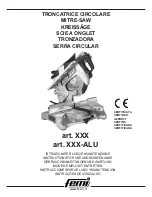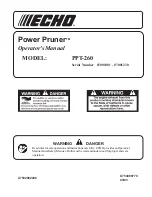
-42-
W1770 21" Bandsaw w/Foot Brake
O
PE
R
ATIO
NS
Tooth.Pitch
Usually measured as TPI (teeth per inch), tooth pitch
determines the size/number of the teeth. More teeth
per inch (fine pitch) will cut slower, but smoother; while
fewer teeth per inch (coarse pitch) will cut rougher, but
faster. As a general rule, choose blades that will have at
least three teeth in the material at all times. Use fine
pitched blades on harder woods and coarse pitched blades
on softer woods.
Blade.Care
A bandsaw blade is a delicate piece of steel that is sub-
jected to tremendous strain. You can obtain longer use
from a bandsaw blade if you give it fair treatment and
always use the appropriate feed rate for your operation.
Be sure to select blades with the proper width, style, and
pitch for each application. The wrong choice of blades
will often produce unnecessary heat which will shorten
the life of your blade.
A clean blade will perform much better than a dirty
blade. Dirty or gummed up blades pass through the cut-
ting material with much more resistance than clean
blades. This extra resistance also causes unnecessary
heat. Resin/pitch dissolving cleaners are excellent for
cleaning dirty blades.
Blade.Breakage
Many conditions may cause a bandsaw blade to break.
Blade breakage is unavoidable, in some cases, since it is
the natural result of the peculiar stresses that bandsaw
blades must endure. Blade breakage is also due to avoid-
able circumstances. Avoidable breakage is most often
the result of poor care or judgement on the part of the
operator when mounting or adjusting the blade or support
guides.
The.most.common.causes.of.blade.breakage.are:
• Faulty alignment/adjustment of the guides.
• Forcing/twisting a wide blade around a short radius.
• Feeding the workpiece too fast.
• Dull teeth or damaged tooth set.
• Overtensioned blade.
• Top blade guide assembly set too high above the
workpiece.
• Using a blade with a lumpy or improperly finished
braze or weld.
• Continuously running the bandsaw when not in use.
• Leaving blade tensioned when not in use.
• Using the wrong TPI for the workpiece thickness.
(The general rule of thumb is three teeth in the
workpiece at all times.)
Summary of Contents for SHOP FOX W1770
Page 72: ......
















































